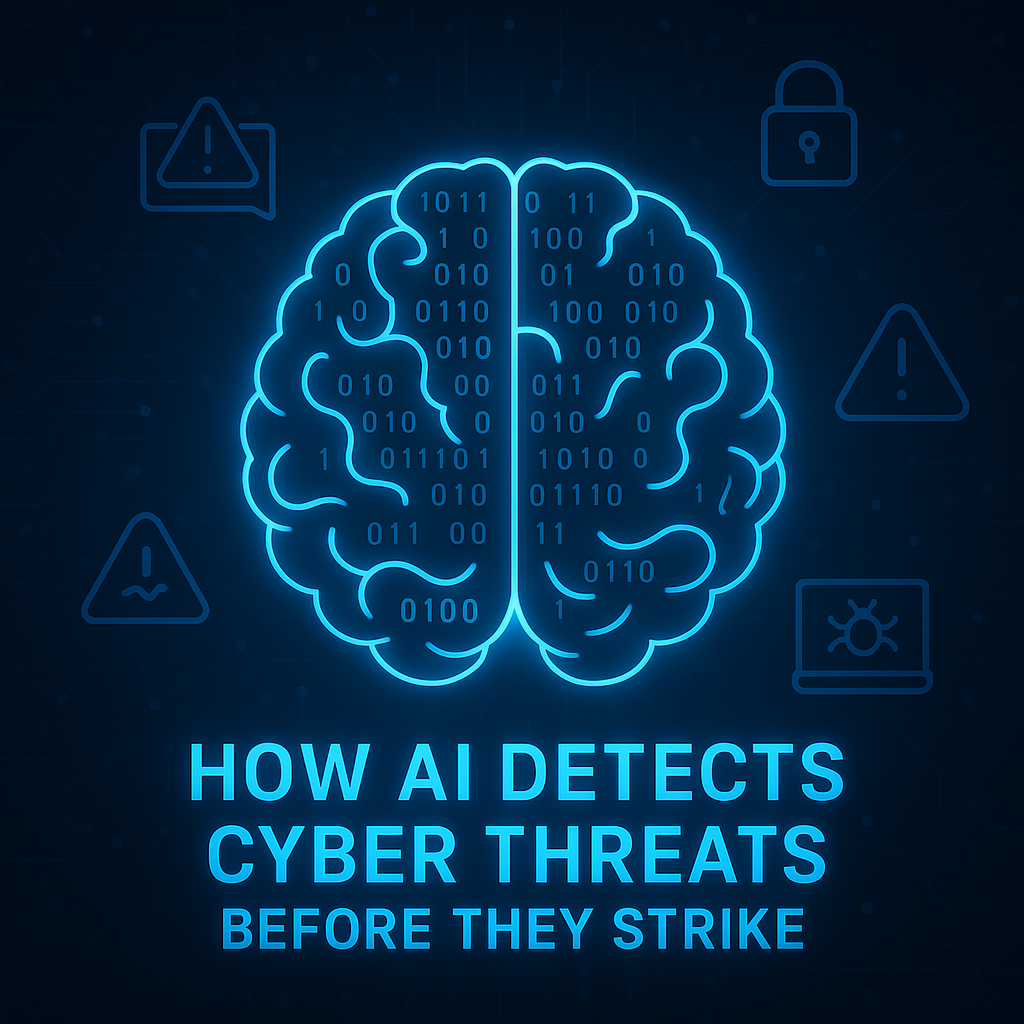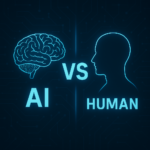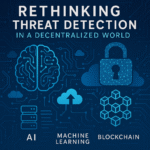How AI detects cyber threats has become a critical concern in today’s digital age, where cyberattacks have grown in sophistication, frequency, and scale. Traditional security approaches are no longer enough, leading organizations worldwide to embrace Artificial Intelligence (AI) for proactive defense.
The Shift from Reactive to Proactive Cybersecurity
For decades, cybersecurity relied heavily on rule-based systems and signature-based detection methods. These systems work well for recognizing known threats but fail miserably when faced with zero-day vulnerabilities, polymorphic malware, or AI-powered social engineering attacks. As threats have become faster and more adaptive, defenders have been forced to transition from a reactive to a proactive approach, one that anticipates threats and blocks them before any damage occurs. AI is the driving force behind this transformation. By continuously learning from historical and real-time data, AI helps identify risks that humans might miss and respond with machine-speed precision. This shift is essential for modern enterprises that operate in cloud-native, decentralized, and high-speed digital environments.
Understanding the Core of AI-Powered Threat Detection
At its core, AI-powered threat detection uses machine learning models, neural networks, and natural language processing (NLP) to process vast amounts of data across endpoints, networks, emails, and cloud infrastructure. These models are trained to recognize normal behaviors and traffic patterns, then flag deviations from those baselines as potential threats. The strength of AI lies in its ability to continuously adapt, learning not just from attack signatures but from subtle cues—like behavioral anomalies, unusual login attempts, or encrypted data flows—indicating that something is not right. The result is a highly dynamic system capable of recognizing both known and unknown threats in real time. This is a massive improvement over rule-based systems that require manual updates and are often blind to novel attack vectors.
Understanding how AI detects cyber threats helps cybersecurity teams develop predictive and adaptive defense strategies. According to IBM’s insights on AI in cybersecurity, AI technologies like machine learning and behavioral analytics significantly enhance an organization’s ability to detect threats proactively.
Behavioral Analytics: The Watchdog of the Network
One of the most significant breakthroughs in AI-driven cybersecurity is behavioral analytics. Unlike traditional systems that detect known malware files or attack patterns, behavioral analytics focuses on the actions of users, devices, and software. AI algorithms monitor user behavior—such as access times, file downloads, and resource usage—and create a profile of “normal” activity. When a deviation occurs, such as a user accessing sensitive databases at an unusual hour or downloading large volumes of data unexpectedly, the system triggers an alert. These alerts can lead to automatic actions like revoking access or isolating systems. Behavioral analytics plays a crucial role in identifying insider threats, stolen credentials, and lateral movement, offering a defense layer that goes beyond perimeter security.
Network Traffic Analysis in Real Time
Cybersecurity isn’t limited to devices and endpoints—it encompasses the entire communication infrastructure, from internal networks to the cloud. AI-powered network traffic analysis tools monitor incoming and outgoing traffic, analyzing packet data to detect anomalies like unusual port usage, protocol violations, and suspicious patterns. AI excels in real-time analysis of encrypted traffic without needing to decrypt it, preserving both performance and privacy. By comparing current traffic against historical baselines and known threat indicators, these systems can flag signs of ongoing data exfiltration, DDoS attacks, or command-and-control (C2) activity. The ability to monitor, interpret, and act on this data instantly gives organizations the edge they need to contain threats before they spread.
User and Entity Behavior Analytics (UEBA) for Context-Aware Defense
In addition to general behavioral analytics, User and Entity Behavior Analytics (UEBA) adds contextual intelligence to threat detection. UEBA tools powered by AI assess how users, devices, and even entire departments behave over time. For instance, a developer who typically accesses code repositories suddenly attempting to log into financial systems from an overseas location would be flagged for anomalous behavior. These context-aware insights allow security teams to focus on real threats, reducing false positives and noise. AI-driven UEBA is essential in defending against privilege abuse, phishing, man-in-the-middle attacks, and credential stuffing, especially in environments with thousands of users and constantly changing access levels.
Predictive Threat Intelligence: Looking Ahead, Not Just Behind
One of the most revolutionary aspects of AI in cybersecurity is its ability to predict threats before they happen. By ingesting data from various sources—including public threat feeds, dark web forums, phishing databases, and incident logs—AI systems identify patterns and correlations that signal emerging attack campaigns. These systems can even analyze hacker group behavior and forecast which sectors or organizations are likely to be targeted next. This predictive threat intelligence helps companies prepare for threats not yet in the wild, patch vulnerabilities proactively, and fine-tune their defenses based on likely attack vectors. It transforms security from being reactive to being strategically anticipatory.
Automation and Response at Machine Speed
Detection is only half the battle—automated response powered by AI ensures that threats are neutralized in real time. AI-enabled security systems can automatically isolate affected systems, shut down malicious processes, and revoke compromised credentials—all without waiting for human intervention. These capabilities are especially vital in reducing the dwell time of attackers, which is the period they remain undetected within a system. The faster the response, the less damage is done. AI also integrates with Security Orchestration, Automation, and Response (SOAR) platforms to coordinate actions across multiple security tools, ensuring a cohesive and timely reaction to incidents.
Balancing AI with Human Intelligence
While AI significantly enhances cybersecurity operations, it is not infallible. AI systems require proper training data, constant monitoring, and ethical safeguards. False positives, algorithmic bias, and data quality issues can undermine effectiveness if left unchecked. Therefore, human cybersecurity professionals remain essential. They provide the context, judgment, and strategic thinking that AI lacks. The best cybersecurity strategies combine the speed and scalability of AI with the intuition and experience of human experts, creating a hybrid defense model that is resilient, adaptable, and trustworthy.
Conclusion: The Future of Threat Detection Is Now
AI is revolutionizing the field of cybersecurity by enabling organizations to identify and respond to threats before they cause harm. Through real-time behavioral analysis, predictive intelligence, and automated response, AI empowers cybersecurity teams to stay ahead of increasingly complex threats. As cybercriminals continue to weaponize AI for attacks, defenders must also leverage these tools for protection. By understanding how AI works behind the scenes, organizations can make smarter decisions, build more resilient infrastructures, and cultivate a security-first culture in the digital age. By learning how AI detects cyber threats, organizations can stay ahead of attackers and protect their digital environments proactively.
The future of threat detection is not just fast—it’s intelligent, autonomous, and already underway. And AI is leading the charge.
For a deeper understanding of how AI is utilized in crafting sophisticated phishing attacks and methods to counter them, explore our article on AI-Powered Phishing Attacks and How to Detect Them.





Leave a Reply